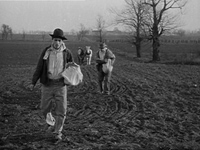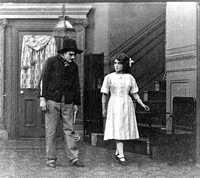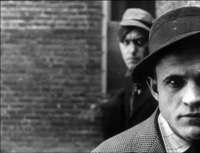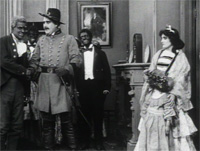
Edwin S. Porter
|
 |

We will study the following films by director Edwin S. Porter: "Life of an American Fireman" (1903), and "The Great Train Robbery" (1903). |
Georges Méliès |
We will study the following films by director Georges Méliès: “The Man with the Rubber Head" (1901), “The One Man Band" (1900), “A Trip to the Moon"(1902), and "The Kingdom of the Faeries" (1903). Read pp. 13-23 in your A History of Narrative Film textbook. Make sure you take notes in your notebook that summarize your reading. |
 |
After reading the above pages in your textbook, and after watching this week's films, answer the following questions: 1. What is the difference between the kind of magic that Méliès performed live at the Théâtre Robert-Houdin and the kind of magic that he was able to achieve in his films? 2. What effect does Méliès's static camera have on the viewer? Why do you think that he chose this static camera style for his films? 3. Describe the typical Méliès film when it comes to the sets, make-up, and acting style employed. 4. Compare and contrast the work of Méliès to the work of the Lumière brothers. What was each one trying to accomplish through their films? Did they succeed? 5. David Cook writes that Méliès "pointed the cinema well on its way to becoming an essentially narrative rather than a documentary medium." What does he mean by this statement? |
Procedure: Answer all of the questions above on the Answer Sheet which you can download HERE. Print the answer sheet and hand-write the questions on the lines provided. Make sure that your work is legible and written in blue or black ink. It is due in class on September 26, 2017. NB: Any deviation from the above rules will result in a loss of points. No late homework will be accepted. Any homework handed in late will receive a grade of 0%. |
| Quiz: Study your reading, your notes, and the notes you took on the films that we watched. There will be a quiz based on the art of Méliès and Porter on September 27, 2017. |

Watch the music video "Tonight, Tonight" by Smashing Pumpkins. It is a homage to Georges Méliès.
D.W. Griffith |
 |

We will study the following short films by director D.W. Griffith: “Corner in Wheat”(1909), “The Lonely Villa” (1909) “The Musketeers of Pig Alley” (1912), “His Trust” (1911). Also make sure that you watch and study the excerpts from the films The Birth of a Nation (1915) and Intolerance (1916). In your textbook read about the early career of D.W. Griffith on pp. 45-51.
|



